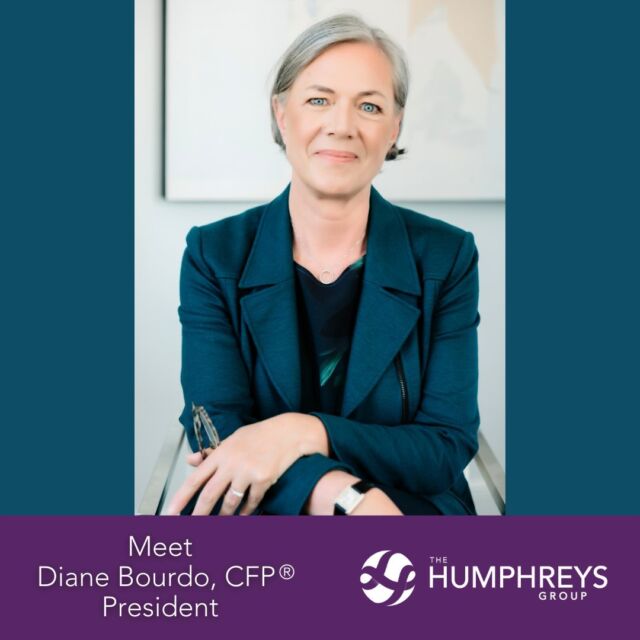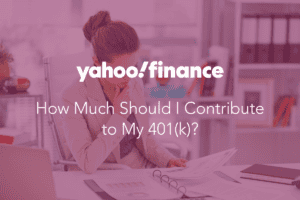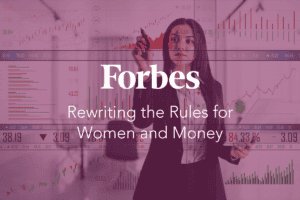By Hallie Kraus, CFP®, CRPC®
As we noted in our most recent blog post (linked here), there has been a tremendous rise in the interest in impact investing and the dollars devoted to it. The primary driver of ESG, and the reason it has become so popular in recent years, is the simple desire to use our money to fund companies that are making the world a better place. Many ESG investors are pleasantly surprised to find that in addition, they’re supporting engagement between investors, businesses, and the government. What does that actually look like?
As is always the case, each asset manager has a different approach and different criteria. But let’s take a deeper dive into the acronym itself, then focus in on the most common investment strategies.
What does ESG stand for?
Before investing in a company, a portfolio manager typically analyzes a massive amount of financial data: everything from its balance sheet and profit margins, to the current phase of the economic cycle, and the current interest rate environment. Managing an ESG fund comes with the additional responsibility and opportunity to incorporate a variety of environmental, social and governance (ESG) factors into their analysis. Here’s what’s actually behind that acronym.
Environmental: What does a company do (or not do) to protect the environment? As you’d probably expect, the most important information that falls under this category is a company’s sustainability practices and their greenhouse gas emissions. But this may also include their water and land use practices, treatment of animals, product packaging, renewable energy usage, and whether existing climate change trends will threaten the company’s future.
Social: How well does a company treat their employees, customers, suppliers, and society at large? Mutual fund companies usually pay attention to labor practices, what sort of hiring, human resources and safety policies the company has adopted, how they protect consumer privacy, their customer satisfaction, and where their supply chains are sourced.
Governance: How do corporate leaders run their business and relate to their stakeholders? Asset managers are usually most interested in executive compensation and how their financial incentives align with the company’s success. They’ll also look at the quality and diversity of the board of directors and management team, how they communicate with shareholders, and examine past lawsuits brought against the company.
Mutual fund companies will use these factors, along with data from third-party rating agencies, like MSCI ESG and Sustainalytics, to develop a comprehensive analysis of the company — in fact, many often end up developing their own ESG rating system.
And here is where the rubber meets the road. When you buy shares of an ESG fund, portfolio managers typically invest your dollars using one (or a combination) of the following strategies:
Negative (or Exclusionary) Screening
If a fund is negatively screened, it means that it either underweights or eliminates companies that the portfolio management team has deemed objectionable based on their ESG data. For example, many ESG funds refuse to invest in tobacco, alcohol, or gun manufacturing companies. They may also eliminate companies that violate some set of norms, like the Ten Principles of the UN Global Compact, or operate in countries with corrupt leadership or human rights abuses.
Positive (or Best-In-Class) Screening
If a fund is positively screened, it holds or overweights companies with strong ESG performance. Oftentimes mutual fund companies will develop a minimum standard based on their ESG rating system, and this strategy invests in companies that exceed that minimum. This is also sometimes called the “best in class” approach. To be clear, this doesn’t always mean they eliminate the poor performers from their fund — it just means they overweight the best performers of a specific group or sector.
Thematic (or Inclusionary) Investing
Then there’s thematic investing, which is not about rewarding or excluding certain companies, but instead about concentrating on one ESG issue. For example, a thematic fund may invest only in companies that use renewable energy, or only in companies that achieve a certain level of gender diversity in their management (like one of our favorite ESG funds, the Pax Ellevate Global Women’s Leadership Fund). Most of the time, thematic funds are focused on an issue that the portfolio management team believes will become a widespread (and profitable) trend over time.
Still, ESG Investing is Subjective
Some mutual fund companies practice just one of these investment strategies, and some may use a combination of all three.
But here’s the thing: try as we might to outline these strategies in a straightforward way, ESG investing in real life is not usually as simple as holding or not holding this or that company. In fact, it’s quite subjective, because every mutual fund company has developed different ESG criteria, offers different depths of research, exercises different levels of flexibility, and deploys a variety of investment strategies.
That means that you may hold a positive screened ESG fund, but still be surprised to find that it holds an airline or an oil company — when in fact the reason it’s there is because it has better ESG metrics, or is making significant strides, compared to other airlines or oil companies. Even negatively screened funds are not absolute: they may underweight, but still hold a very small stake in, companies you consider unfavorable.
All of that is to say, as it becomes more popular and more dynamic, ESG investing is moving away from the binary “yes/no” approach and toward a more nuanced and proactive methodology. The good news is that it can still be worthwhile. In our last piece, we bring this all a little closer to home and outline how The Humphreys Group approaches ESG investing within your portfolio. Check it out here.
























